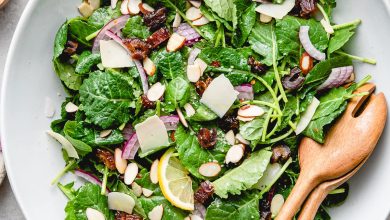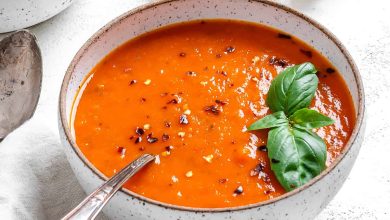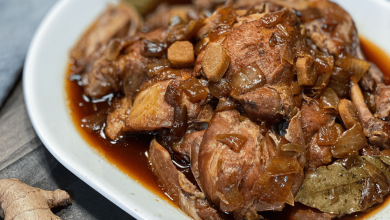🐟 Anchovy Overview:
Anchovies are small, oily fish known for their intense, salty flavor. They belong to the Engraulidae family and are commonly used in various cuisines around the world. These tiny fish are typically filleted, salted, and preserved in oil, making them a versatile ingredient in both cooking and as a condiment.
📜 History:
Anchovies have a rich culinary history dating back thousands of years. They were a staple in the diets of ancient civilizations, including the Greeks and Romans. These fish were often used to enhance the flavor of various dishes due to their umami-rich taste. In modern times, anchovies continue to play a significant role in Mediterranean, Asian, and Latin American cuisines.
🌟 Components:
Anchovies are relatively simple in terms of components. They mainly consist of:
- Fish: Anchovies themselves are the primary component, and they are typically small, silver-colored fish.
- Salt: Anchovies are often cured or preserved in salt, which contributes to their distinctive flavor.
- Oil: After curing, anchovies are often packed in oil, usually olive oil, to keep them moist and flavorful.
🍽️ Steps to Prepare Anchovies:
Here’s a basic guide on how to prepare anchovies for various culinary purposes:
-
Cleaning: If you have whole anchovies, you’ll need to clean them. Remove the heads, tails, and entrails, then rinse them thoroughly under cold water.
-
Filleting: To fillet anchovies, make a shallow incision along the belly of the fish and carefully remove the spine and any remaining bones. You can also purchase pre-filleted anchovies for convenience.
-
Curing: If you want to preserve anchovies, you can cure them with salt. Layer the fillets with salt in a container, covering each layer with salt. Leave them to cure for a few hours to a few days, depending on the desired level of saltiness.
-
Rinsing: After curing, rinse the anchovies under cold water to remove excess salt.
-
Packaging: Place the cleaned and cured anchovies in a jar or container, and cover them with olive oil. This step helps preserve the anchovies and adds flavor.
-
Storage: Seal the container and store it in the refrigerator. Properly stored, anchovies can last for several months.
⏱️ Preparation Time:
The time needed to prepare anchovies can vary depending on your chosen method. Filleting and curing anchovies can take anywhere from 30 minutes to a few days, depending on your preference for saltiness. Once prepared, using anchovies in dishes typically requires only a few minutes, as they are often used sparingly due to their intense flavor.
So, whether you’re adding a touch of umami to your pasta sauce or crafting a traditional Caesar salad dressing, anchovies can elevate the taste of your dishes in a matter of minutes! 🍽️🐟🌿
Certainly, here are the nutrition facts and some health information about anchovies:
Nutrition Facts (per 100g of Anchovies):
- Calories: 210 kcal
- Protein: 24g
- Fat: 11g
- Saturated Fat: 2.6g
- Monounsaturated Fat: 3.7g
- Polyunsaturated Fat: 2.7g
- Omega-3 Fatty Acids: 2053mg
- Cholesterol: 60mg
- Sodium: 2100mg
- Vitamin D: 570 IU (142% of Daily Value)
- Calcium: 147mg (15% of Daily Value)
- Iron: 4.7mg (26% of Daily Value)
Health Information:
-
Rich in Omega-3 Fatty Acids: Anchovies are an excellent source of omega-3 fatty acids, particularly eicosapentaenoic acid (EPA) and docosahexaenoic acid (DHA). These fats are known for their heart-healthy benefits, including reducing inflammation and lowering the risk of heart disease.
-
Low in Calories: Anchovies are relatively low in calories, making them a suitable addition to a weight-conscious diet.
-
High in Protein: Anchovies are a good source of high-quality protein, which is essential for muscle maintenance and overall body function.
-
Rich in Vitamins and Minerals: They contain essential nutrients like vitamin D, calcium, and iron. Vitamin D is crucial for bone health, while calcium and iron are important for various bodily functions, including blood clotting and oxygen transport.
-
Sodium Content: Anchovies are quite salty due to the curing process. While sodium is an essential mineral, excessive salt intake can lead to high blood pressure, so it’s advisable to consume them in moderation.
-
Heart Health: The omega-3 fatty acids in anchovies can help reduce the risk of heart disease by lowering triglycerides, improving blood vessel function, and reducing inflammation.
-
Brain Health: DHA, one of the omega-3 fatty acids in anchovies, is vital for brain health and cognitive function, making them a brain-boosting food.
-
Bone Health: Anchovies provide calcium, which is essential for maintaining strong bones and teeth.
-
Iron Absorption: The iron in anchovies is in a form that is easily absorbed by the body, helping prevent iron-deficiency anemia.
-
Low Mercury: Compared to larger fish species, anchovies are lower on the food chain and typically have lower mercury levels, making them a safer choice for regular consumption.
Remember that while anchovies offer several health benefits, their intense flavor means they are often used in small quantities as a seasoning or ingredient in dishes rather than consumed in large portions.








